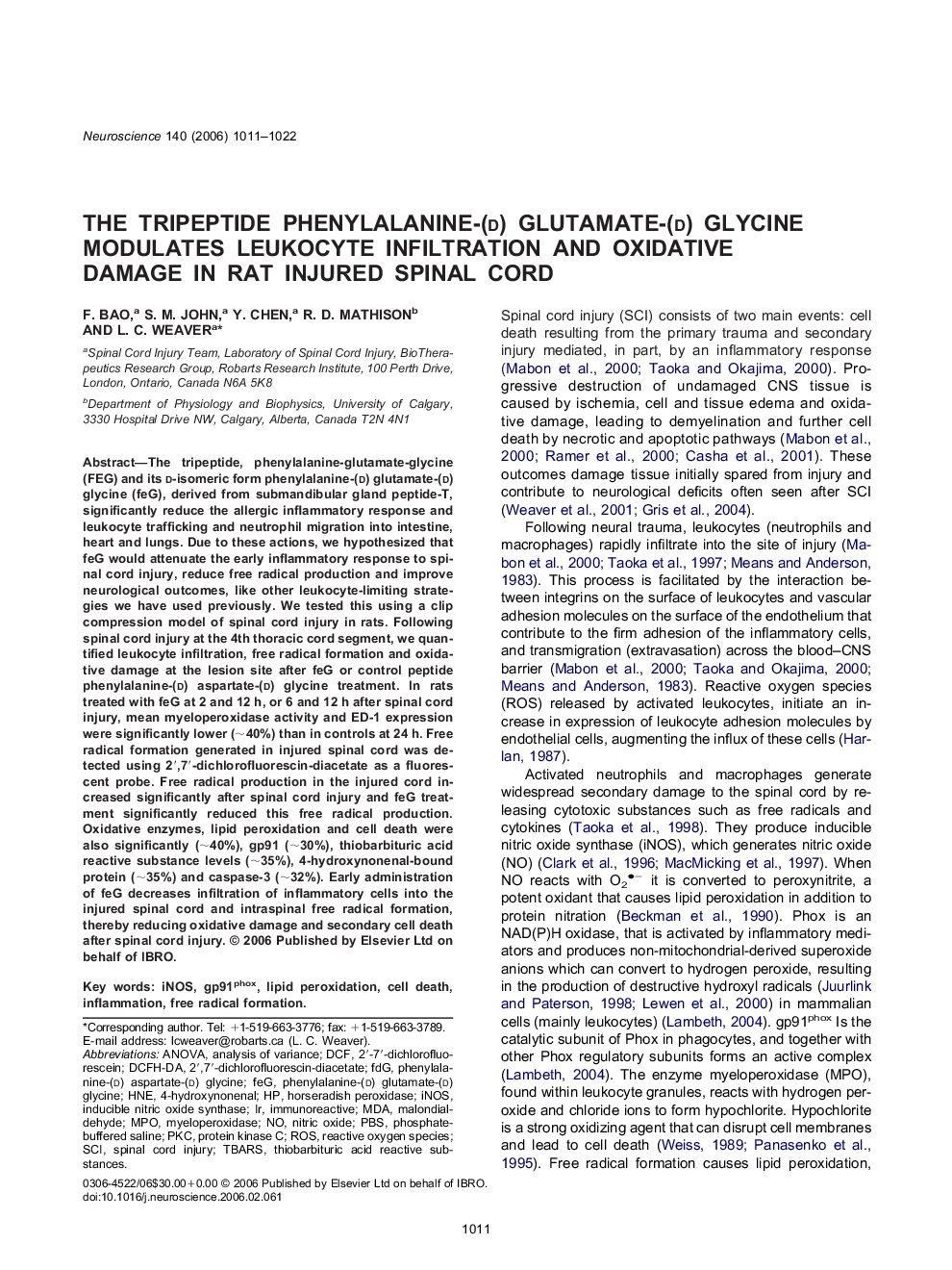| Article ID | Journal | Published Year | Pages | File Type |
|---|---|---|---|---|
| 4341688 | Neuroscience | 2006 | 12 Pages |
Abstract
The tripeptide, phenylalanine-glutamate-glycine (FEG) and its d-isomeric form phenylalanine-(d) glutamate-(d) glycine (feG), derived from submandibular gland peptide-T, significantly reduce the allergic inflammatory response and leukocyte trafficking and neutrophil migration into intestine, heart and lungs. Due to these actions, we hypothesized that feG would attenuate the early inflammatory response to spinal cord injury, reduce free radical production and improve neurological outcomes, like other leukocyte-limiting strategies we have used previously. We tested this using a clip compression model of spinal cord injury in rats. Following spinal cord injury at the 4th thoracic cord segment, we quantified leukocyte infiltration, free radical formation and oxidative damage at the lesion site after feG or control peptide phenylalanine-(d) aspartate-(d) glycine treatment. In rats treated with feG at 2 and 12 h, or 6 and 12 h after spinal cord injury, mean myeloperoxidase activity and ED-1 expression were significantly lower (â¼40%) than in controls at 24 h. Free radical formation generated in injured spinal cord was detected using 2â²,7â²-dichlorofluorescin-diacetate as a fluorescent probe. Free radical production in the injured cord increased significantly after spinal cord injury and feG treatment significantly reduced this free radical production. Oxidative enzymes, lipid peroxidation and cell death were also significantly (â¼40%), gp91 (â¼30%), thiobarbituric acid reactive substance levels (â¼35%), 4-hydroxynonenal-bound protein (â¼35%) and caspase-3 (â¼32%). Early administration of feG decreases infiltration of inflammatory cells into the injured spinal cord and intraspinal free radical formation, thereby reducing oxidative damage and secondary cell death after spinal cord injury.
Keywords
DcfDCFH-DAiNOSTBARSFDGPKCHNE2′-7′-dichlorofluorescein2′,7′-dichlorofluorescin-diacetate4-hydroxynonenalPBSGp91phoxMDAfree radical formationMPOROSSpinal cord injuryinflammationimmunoreactiveanalysis of varianceANOVAinducible nitric oxide synthasescimalondialdehydePhosphate-buffered salinefeGCell deaththiobarbituric acid reactive substancesmyeloperoxidaseNitric oxideHorseradish peroxidaseLipid peroxidationProtein kinase CReactive oxygen species
Related Topics
Life Sciences
Neuroscience
Neuroscience (General)
Authors
F. Bao, S.M. John, Y. Chen, R.D. Mathison, L.C. Weaver,
